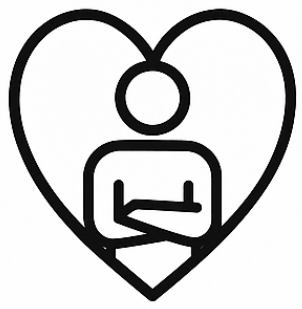What Are Attachment Styles?
Attachment styles are patterns we carry into our closest relationships. They influence how we connect, how we argue, and how we handle trust. The idea comes from attachment theory, first introduced by psychologists John Bowlby and Mary Ainsworth, and it has since become one of the most widely studied areas of psychology. Mary Ainsworth’s ‘Strange Situation’ experiment showed how early caregiver responses predict attachment patterns well into adulthood.
Attachment begins in childhood, based on how safe and understood we felt with caregivers. But experiences later in life also leave their mark. A painful breakup, betrayal, bullying, or conflict in the family can all reinforce or even create new patterns in how we relate to others.
Psychologists generally recognize four main attachment styles: secure, anxious, avoidant, and fearful-avoidant.
Why Do Attachment Styles Matter?
Attachment styles explain some of the most frustrating relationship questions:
- Why do I keep ending up with the same type of partner?
- Why do fights escalate so quickly?
- Why do I feel so needy, or why do I pull away?
- Why do I struggle to trust even when I want to?
Attachment is not fixed. It is a set of learned responses that helped us survive earlier experiences. Once you know your style, you can begin to practice new ways of relating, and over time you can move toward security.
The Four Attachment Styles

Secure Attachment
Comfortable with closeness and independence, secure partners balance trust with healthy boundaries. Explore what secure attachment looks like in daily life and how to cultivate more of it.

Anxious Attachment
Craves reassurance, fears abandonment, and often feels on edge in relationships. Find out what drives anxious attachment and the steps you can take to feel more grounded and secure.

Dismissive Avoidant Attachment
Values independence, often pulls away when things get too close, and struggles to open up. Learn how dismissive avoidant attachment shows up in love and how to create closeness without losing yourself.

Fearful-Avoidant Attachment
Wants connection but panics when it arrives, leading to a push–pull cycle of intimacy and withdrawal. Discover the roots of fearful-avoidant attachment and how to break the cycle.

How Do I Know Which Attachment Style I Am?
You might already see yourself in one of the descriptions above. Many people recognize their style instantly once they read about it. But the most accurate way to find out is to take an attachment style quiz based on validated research.
Your results will not only highlight your main attachment pattern but also give you insight into how it may play out in daily life. Remember, attachment is a spectrum. You may see traits of more than one style, and that is completely normal.
The Goal — Moving Toward Secure Attachment
Secure attachment is considered the healthiest foundation for relationships. When you feel secure, you can trust your partner without constant worry, handle disagreements without fear of collapse, and enjoy closeness without losing yourself. Security makes it easier to communicate needs, respect boundaries, and feel confident whether you are together or apart.
Understanding your attachment style is the first step toward that security. Learning your partner’s style can also be a turning point, helping you both make sense of behaviors that used to feel confusing or personal.

Want to Go Deeper?
Taking the quiz is a great first step, but real change happens with consistent practice. That’s why we created our courses, designed to help you move from awareness into real self-development.
Whether you are looking to:
- Break old relationship patterns
- Feel calmer and more secure in love
- Understand your partner’s reactions without constant conflict
- Or finally build the trust and balance you’ve been craving
our self-paced courses give you step-by-step tools based on psychology and neuroscience.
Frequently Asked Questions About Attachment Styles
No. Attachment styles are learned patterns, not life sentences. With self-awareness, therapy, or intentional practice, people can move toward a more secure style over time.
Yes. Experiences such as betrayal, abuse, or sudden loss can shift someone’s attachment, even in adulthood. Trauma often reinforces insecurity, but healing work can reverse the impact.
Research suggests that fearful-avoidant (sometimes called disorganized) is the least common, but also one of the most complex to work through because it combines both anxious and avoidant tendencies.
Knowing your own style — and your partner’s — makes it easier to understand triggers, patterns, and needs. Instead of taking things personally, you can see behaviors as part of an attachment response and work together on healthier ways to connect.

